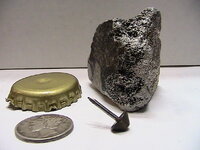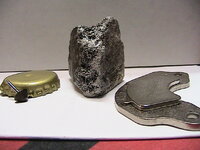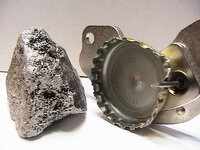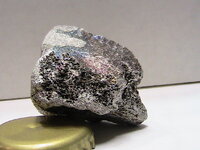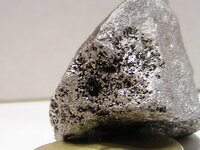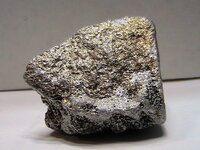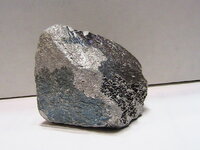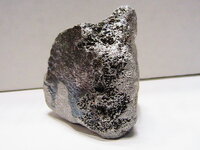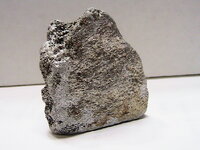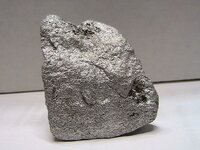thepest
Well-known member
I saw the "Could this be a meteorite?" post... And remembered this stone I found while detecting... In the course of pulling another piece of South Jersey aluminum... Out of mostly sand in a wooded area no less... This stone popped out... Thinking it was my target... I ran the detector over it... nuthin... But it looked weird... and... it is exceptionally heavy... like a large lead sinker... It's too heavy to be granite... I pictured a bottle cap, an upholstery tac, and my recently found mercury dime for size... next I show an earth magnet pulled from a hard drive... If there was a whisper of iron.. that magnet would have grabbed on... The sandy granular looking spots don't show in the light properly... but they have a crystalline appearance... like when you find a broken piece of die cast metal... It looks like there is some kind of silver paint splashed on it... but it's not... it's the rock's actual color... It's not slag I recognize of any kind... I've found enough of that over the years... Is there such a thing as lead ore??? And if so... why doesn't the detector sound off... like when I find a sinker in the sand... Then my last thought was... could it be a small shattered fragment of a meteor??? I don't know... I just know it's small, heavy, and strange.... I hope it's not radio active 


